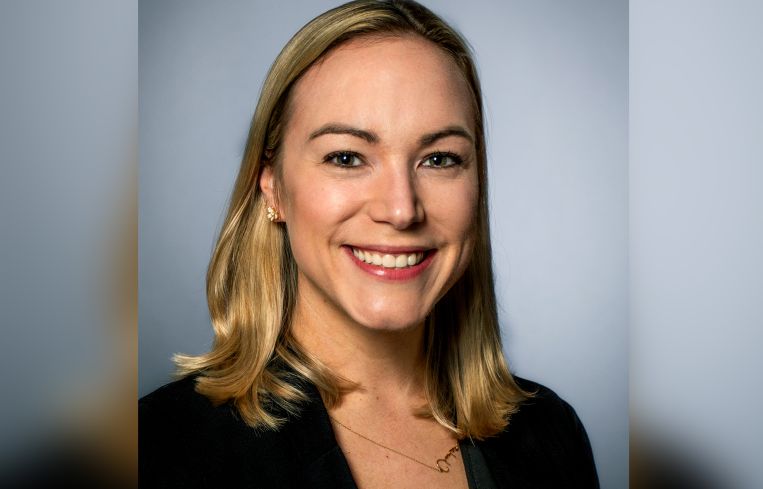How TCW’s Liza Crawford Manages Risk With an $80B Asset Book
By Brian Pascus June 23, 2025 6:30 am
reprints
Liza Crawford is a commercial real estate finance maven. At TCW, a global asset manager with $200 billion assets under management, Crawford serves as a specialist portfolio manager in the fixed-income group and is co-head of global securitized. She helps manage roughly $80 billion in securitized assets that cover the gamut of asset classes, particularly commercial mortgage-backed securities (CMBS).
Crawford’s expertise spans conduct deals, single-asset, single borrower (SASB) securitized loans, private credit, structured finance and asset-based lending. She sat down with CO to discuss her career and the expectations that come with managing such an enormous book of CRE assets.
This interview has been edited for length and clarity.
Commercial Observer: What is your career path to where you are today?
Liza Crawford: So in 2008, I interned at Credits Suisse in fixed-income sales and trading, and loved the securitized side. Then I started in securitized [assets] in 2009, initially in sales, covering all the different sectors, and then after about three years of that, I moved over to the banking side to asset finance. Here I was more focused on the residential loan side, where there was a big risk transfer happening at the time. And then after about a year, I joined a hedge fund called EJF, where I got to cover structured credit more broadly, as well as mortgage and equity real estate investment trusts. And then I joined TCW in 2015 as a dedicated CMBS trader. So that 2015 move was really the first time I prioritized all my time on commercial real estate and CMBS, and I did that for a few years. Then had the opportunity to move out to London to help grow our international securitized platform, before coming back stateside in 2020, and becoming co-head of securitized more broadly here at TCW. So I cover all sectors.
What was 2024 like, in the structured credit sphere, in terms of managing your investments?
Taking a step back, it all began in 2022, as that’s when we really saw interest rate hikes hit, so there were a lot of us [in the securitized space] just re-underwriting everything we owned, specifically if you had subordinate debt exposure, SASB exposure. And then leaning into the credits that you felt you were resilient and trying to source those credits, trying to be proactive on exiting out of exposures that you thought were more vulnerable, where a sponsor might walk away, or where there was a real dislocation at the cash flow level and evaluation event. So it’s been really fun, frankly. It’s offered a great proof of concept of doing your credit work.
Where did you lean in?
We really leaned into the single-asset, single-borrower side of the market because it was the most distressed. And 2023 was a great opportunity to hustle and buy bonds. In 2024, we started to see new issuance pick up again. We saw spread-product [nongovernment bonds] rally in general after the Federal Reserve signaled their rate hikes were over, and that did translate to improved liquidity, improved issuance in CMBS. So that was a great opportunity to take advantage of a new issuance market to add high-quality risks to the books, and we’re still trading at spreads wide to other securitized credit sectors. And then in 2024 you saw progress in things like office become broadly accepted in the market again, and so some of that illiquidity premium went away.
How did you manage office distress the past few years?
So our office strategy was a bifurcation thesis, very similar to our super-regional mall retail thesis in years prior. It was identifying the assets that were high quality, and seeing consistent sponsor investment to make them true Class A. The consistent sponsor investment — that’s always a tell. If sponsors are actually investing in upgrades to make a property more relevant to tenants, if they’re investing in tenant-improved leasing costs, free-rent periods to get tenants in the door, that’s all a very positive sign to us and signals that this asset is core in their portfolio. And if the asset is core, they’re unlikely to let a capital markets dislocation disrupt their ability to own and operate for the long term. And then it’s being mindful about leverage, which you can underwrite on every single deal. So there are some assets where you could see the sponsor’s lack of investment, you could see that the leverage profile just didn’t make sense because there was this meaningful cash flow deterioration. There were some offices that came through in the heyday of 2019, for example, that were lower occupancy with that business model, and now they’re just gonna magically lease up at these third-party appraised higher rents? That’s not tangible.
What was your international investment experience like? Was it difficult to understand the European real estate markets as an American?
There was a lot of reading and playing catch-up. There are different jurisdictions, there are different countries, there’s different nuances. Securitized markets are also different there — you have a lot of retained issuance, you’re gonna have more consistent place issuance, especially at more attractive spreads, and it’s really with nonbank issuers, so that’s where you have to prioritize getting to know nonbank originators and issuers that rely upon securitization debt financing. And then from a credit perspective, residential mortgages are a large part of the market. In the U.S. we have nonrecourse mortgages, and then we had some lending issues leading into the Global Financial Crisis that are very much remedied in the U.K., Europe and Australia. There you tend to have a recourse mortgage, which just means policy really tries to ensure that that borrower can afford that mortgage and that servicers help work with borrowers if they undergo temporary hardship.
How did you meet the challenge of CMBS and CLO issuance collapse in 2023 and 2024?
We have a lot of daily liquidity money, so you’re always being mindful about how the market’s evolving, and what liquidity looks like. But you’re also trying to lean into the credit dislocation, that bifurcation thesis I mentioned, of identifying the credits we like and being proactive on sourcing. We would have expected a little more forced selling in 2023, we didn’t see that, so there was almost that kind of freeze in the market for a bit. You couldn’t put on as much risk as perhaps you wanted to. But we doubled our CMBS exposure in our opportunistic accounts and we continued that through 2024, and heading into last year was really when we saw that primary opportunity set pick up.
What’s it like to have the responsibility of $80 billion of securitized capital?
It’s all our clients’ money, so you’re really focused on making sure you’re delivering for your client. But you also understand it’s an industry where you need to do well, so you really just have to work hard. You have to make sure the team is motivated, you are motivated, you’re covering your markets proactively, and you’ve got your expertise. Securitized is constantly evolving. Even 2022 was an incredible opportunity to stress test everyone’s credit work in CMBS. But you just have to work very hard. You sleep at night because you’re always doing the credit work right before you buy anything. What would keep me up at night is if I inherited a portfolio where nobody did credit work. But if you do the credit work, then you’re able to pick assets that are going to be more resilient in any capital market environment. And you also can use things like diversification, appropriate sizing, they’re various kinds of structures to make sure that you’re being as thoughtful as possible about risk.
Where is the safest place to invest?
So we still love single single-asset, single-borrower CMBS. We see plenty of people lean into investment-grade, senior-most conduit — you’re benefiting from that diversification, it’s a more liquid area of the market. But we’re an active asset manager. Our clients are looking for us to deliver some incremental value-add, so we really roll up our sleeves and do the credit work. And so how do we feel comfortable with the credits? What we like about SASB is the differentiation. We’re getting a lot of information. There’s a lot of transparency out there. We’ll do property tours to see that the physical occupancy is actually in line with our expectations on assets. You really can kind of establish your thesis on a credit and then build your position in that credit with intentionality and feel really confident. Also, if you are in a circumstance where you really like a credit and then the market moves, that’s an opportunity to add even more at wider levels. And then it’s also about constant surveillance. We all recognize that commercial real estate is a lot of idiosyncratic risk. You need to constantly re-underwrite. You can’t be asleep.
You also work with residential mortgage-backed securities as well. What’s the strategy there?
So we have about $15 billion in residential mortgage-backed securities on the private label side, and even more on the agency mortgage-backed securities side. On the private label side, you’re looking at very high-quality underlying collateral because of home price appreciation in the legacy market. Those loans originated before the GFC, and they’ve been modified. You’re getting more of that monthly payment going to principal repayment, so you’re building that equity component. And then for the RMBS 2.0 or post-financial crisis originations, it’s much more disciplined underwriting. So it’s really about feeling strongly about the collateral and having to be sensitive to repayment expectations. There are different flavors, like unqualified mortgages or prime jumbo [loans]. We’ve seen a lot of movement and the credit risk transfer market over the past few years. So we’re active in that market, too, but it’s a very different credit risk profile than something like SASB CMBS.
What is the best investment advice you received in your career?
Being excellent on credit work. I can’t emphasize that enough. No one should ever fall into the trap where they’re valuing something off of where it last traded, or they are valuing something off a model that commoditizes risk outlook. In something like SASB that has binary risk, you really need to be as thoughtful as possible about the structure, about the sponsors’ investment, some of the qualitative components as well as the quantitative. We’re very focused here on being excellent with our credit work.
Brian Pascus can be reached at bpascus@commercialobserver.com



